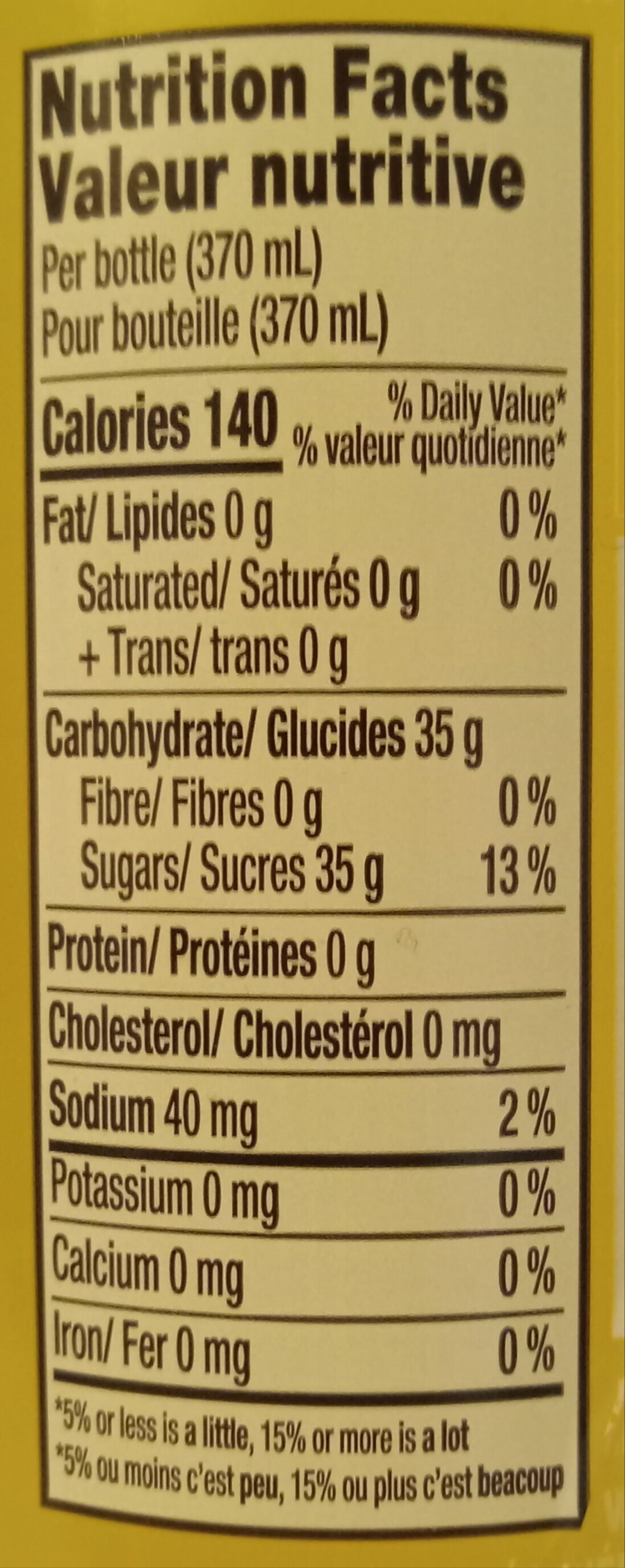Pineapple Natural Flavour Soda - Jarritos - 370 mL
This product page is not complete. You can help to complete it by editing it and adding more data from the photos we have, or by taking more photos using the app for Android or iPhone/iPad. Thank you!
×
Barcode: 0090478410043 (EAN / EAN-13) 090478410043 (UPC / UPC-A)
Quantity: 370 mL
Brands: Jarritos
Brand owner: Jarritos, Inc.
Categories: Plant-based foods and beverages, Beverages, Plant-based beverages, Carbonated drinks, Fruit-based beverages, Sodas, Fruit sodas, Sodas with exotic fruits, Sweetened beverages
Labels, certifications, awards:
Kosher, Natural flavors, Orthodox Union Kosher
Manufacturing or processing places: Mexico
Stores: Circle K
Countries where sold: Canada, France, United States
Matching with your preferences
Environment
Packaging
Transportation
Report a problem
Data sources
Product added on by usda-ndb-import
Last edit of product page on by binzyboi.
Product page also edited by ecoscore-impact-estimator, kiliweb, nomi77, openfoodfacts-contributors, org-database-usda, teolemon, yuka.Fbx6JeewNpYdA9_08oFu2DeiT97HG9NFGF0NoQ, yuka.He9oZuy7IfYRHvfI_Y8e9xOLKN34KvtJGnMgog, yuka.IL58Lv3UMpAYIMLN2KELgzW0KvqwKu14E0UcoQ, yuka.MJJoN8GVBM8PIvrxzr4r0z-YRde_Ls1lCGBUog, yuka.UktZTkx2VWRqT0Fyd3ZJbTJ3T0YxbzU2eks2RWJIMjNkTEVUSWc9PQ, yuka.WVl3Y0xmd1pwNmhUbFBNdjFUK045TUI1NUlXeWMxeTNlOFkySVE9PQ, yuka.sY2b0xO6T85zoF3NwEKvlh19WsbSmDzabBXfwGuk3u2vc5bTcYFX_arlI6s, yuka.sY2b0xO6T85zoF3NwEKvlkNADeGGrDfZNQLWgHbU4e6-d4DsXN9x-473Iqs, yuka.sY2b0xO6T85zoF3NwEKvlm1XSPfF-QndbQblx2SlmenUJKfKSspS86T_Oas, yuka.sY2b0xO6T85zoF3NwEKvlmpmdtGE_T6aaR76qxaIzNKHCr3GSPt209P8Kqg.










